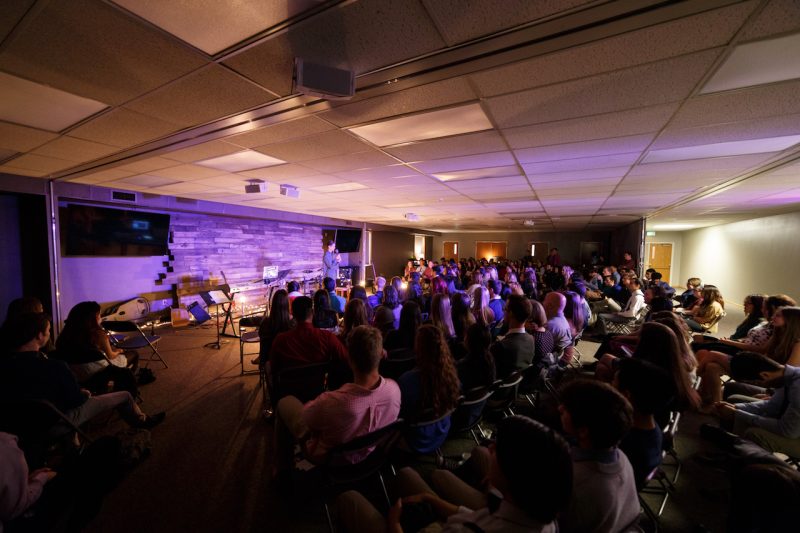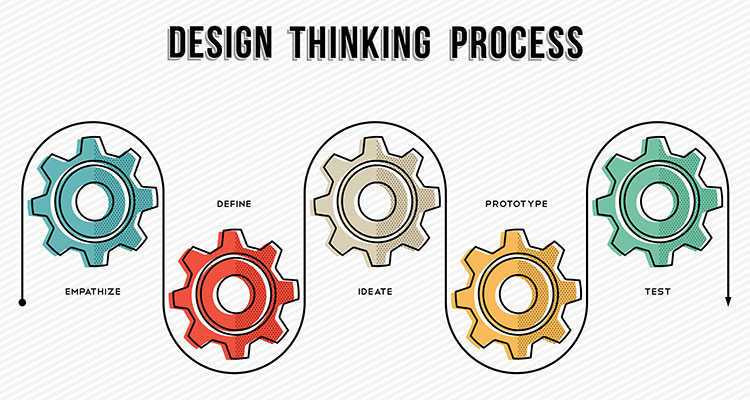Tech Redundancy
By Anthony Coppedge
Two is better than one, especially when it comes to mission-critical technology in churches. From the pastor’s mic beltpack to the projectors in each of the large venues to extra dimming modules for the architectural and stage lighting, having an active reserve of technology can mean the difference between a seamless service or a veritable train wreck.
The trick, it would seem, is in convincing the church to spend extra money on additional hardware. Those dollars that, even in a bullish economy, could be a hard sell. But what if it’s not either of those scenarios?
Not More Gear; Enough Gear
There’s a big difference in selling something ‘extra’ as opposed to selling something that ensures consistency and dependability. When the stakes are high — and they are for weekend services — and the price of failure is either fiscally quantifiable or has a high opportunity cost, the need for redundancy becomes clear. These are not line item expenses listing ‘quantity: 2’, but proper technology and a system design that ensures continuous performance for once-a-week services.
As part of the initial needs assessment, it’s important to ask the church leadership leading questions that determine their pain points, their stated goals and their specific expectations. For existing systems, they’ll have plenty to add to the ‘pain points’, as they’ll have undoubtedly exposed weaknesses and gaps in their current technology systems. When new systems design is discussed, the past performance of previous systems have set benchmarks for expected performance and taught lessons of what they do not want to repeat as well as what they do want.
Agreeing with the church leadership on expectations is the single best way to establish baselines for minimum system requirements, which will include redundancy of key system components. When the design process simply meets desired expectations and goals, redundant systems and back-up contingency plans are then a natural part of a holistic system. The mindset and value proposition is key: It’s not about “more stuff,” but instead about ensuring consistency of operation in (almost) any situation.
Sure, there are those situations where all power to their grid is cut where nothing but a facility-wide back-up generator will save the day. Beyond those devastating freak issues, the more pedestrian day-to-day small failures can be avoided without adding considerable cost.
Double Up
In some instances, the system design can include double technology solutions as part of the basic system, not a luxury for those with fat budgets. The manufacturers have continued to roll out equipment that is meant to be used in conjunction with multiple pieces of equipment and this kind of flexibility and redundancy needs to be part of the marketing campaigns and sales pitches.
Sometimes, though, a feature that is dubbed “redundant” is actually a misnomer. For example, the multi-lamp projectors on the market were built to satisfy the need for additional brightness without adding more projectors. With all respect to meeting this demand in certain markets, it’s my experience and opinion that these are not good redundant systems for churches. First, the single power supply means that no matter how many lamps are packed inside the projector, one failure here means none of those lamps will work. Additionally, when two or more of these projectors are used in the same room on multiple screens and just one of those lamps goes out on a single projector, the color matching mess of a new lamp almost ensures image disparity between the two screens. Instead, two single-lamp projectors (at perhaps 60 percent – each – of the needed brightness) can meet the need and offer better redundancy.
The same kind of thinking applies to lighting instruments, too, and their associated dimmers. In a time when this technology is designed by the manufacturer for demanding environments where ‘the show must go on,’ churches can benefit from this kind of design methodology.
Redundant Support
Some technology is simply too expensive to justify the expense of two identical units. From audio mixing consoles, to large lighting consoles or video switchers, a duplicate unit is out of reach for all but the most ample of budgets.
Instead, the redundancy can be in important sub-systems, such as back-up power supplies for each major component, large uninterrupted power supply (UPS) systems and even different isolated transformers for video, audio and lighting.
And, speaking of support, having a service contract that guarantees 24-hour (or less) discounted/free rentals in case of equipment failure is worthwhile insurance many churches will gladly choose — especially if they’ve ever had a major tech failure during weekend services. In fact, mission-critical thinking is where the relationship of a successful systems integrator will help churches make the decision to spend a little more now instead of a lot more later on (see TRENDS: Mission-Critical Upgrades).
Redundant Operation
Once the church understands how their technology redundancy for key systems provides peace of mind and consistent operation, it’s an easy conversation to talk about standardization of key tech pieces across all of their venues (see TRENDS: Multi-Site Church Videos). Training volunteers on a smaller version a particular mixing console makes it easy to help move proficient volunteers from the small venue to progressively larger venues with progressively more robust mixing consoles. By standardizing on one manufacturer’s mixing consoles, the menu systems are similar and operation is pretty consistent, too; the larger units simply do more.
One of the big keys to successful tech volunteers is equipping them with the tools and training to make their job fun and rewarding, not a hot-seat position where they’re anxiously trying to avoid failure.
What If?
The decision to make key tech components more reliable through redundancy adds confidence for the church, the systems integrator and the manufacturer. Why all three? Because the church knows they’ve done all they can to create a seamless system to ensure weekend consistency, the systems integrator will have the chance to leverage the relationship of a very satisfied church client (no failures = a very happy pastor) and the manufacturer can actually promote “uptime” percentages to the church market like they do to other vertical markets.
Asking “what if” questions helps the church leadership come to obvious conclusions and changes the perception from “adding more” to “ensuring consistency.” The distinction is huge because the greater value proposition is not in ‘more’ but in ‘peace of mind.’
Yeah, But
Then again, there are those clients (church market or otherwise), where the term ‘value engineering’ is a euphemism for ‘financially cheap.’ Recognizing this reality means re-thinking the contract documentation.
For every cut that is made, instead of simply removing it from the budget, itemized list or scope of work, create a new section in the document called “Value Engineered Reductions.” In this section, clearly define what was cut, what the impact of the cut means to the integrity of the system and the new expectation that comes along with the item’s removal. This page must be initialed/signed by the church leadership along with the rest of the contract. The purpose of this extra signing step is not to have an “I-told-you-so” document to wave in their face when/if this becomes and issue down the road, but as a gut-check for the leadership to truly understand the revised expectations. By doing so, more than a few churches will actually add gear back in, unwilling to accept a lowered expectation.
Redundant technology systems have been largely missing in the house of worship market. This is due mostly, I believe, from the greasy salesmanship of those trying to add margin to each sale and the now wary church buyer looking out for padded line items for extra margin. Yet the opportunity exists to market, sell, design and support systems that massively reduce weekend technology failures and add immensely to both the satisfaction of church leaders and their tech teams. And, as they say, a happy client that will promote their satisfaction to other churches is worth more than any amount of advertising can buy.
A former staff member at three mega churches and church technology consultant, Anthony Coppedge has developed a respected reputation as a leader in technical and communications circles within the church marketplace. Reach him atanthony@anthonycoppedge.com or on Twitter athttp://www.twitter.com/anthonycoppedge






